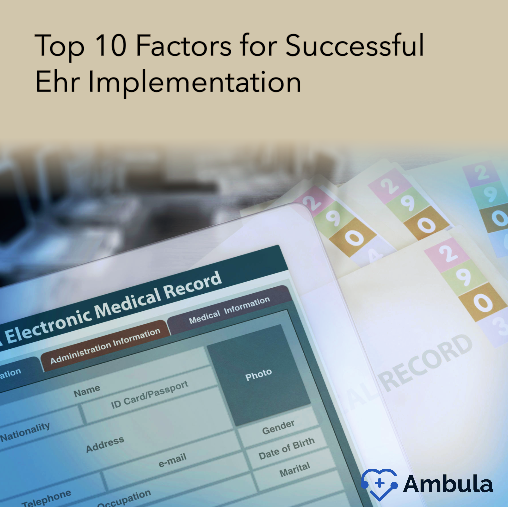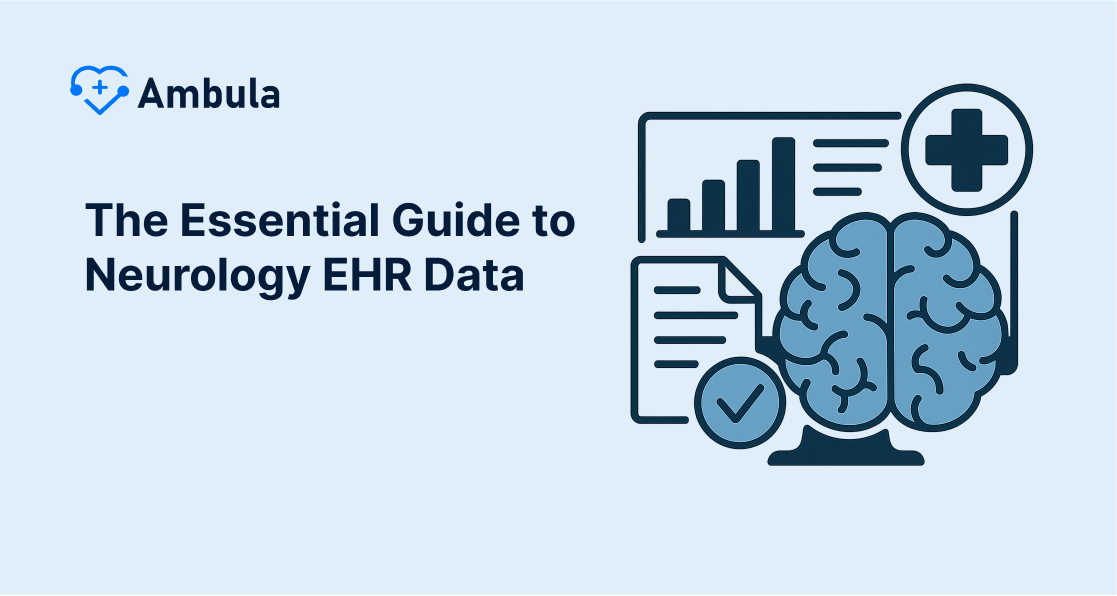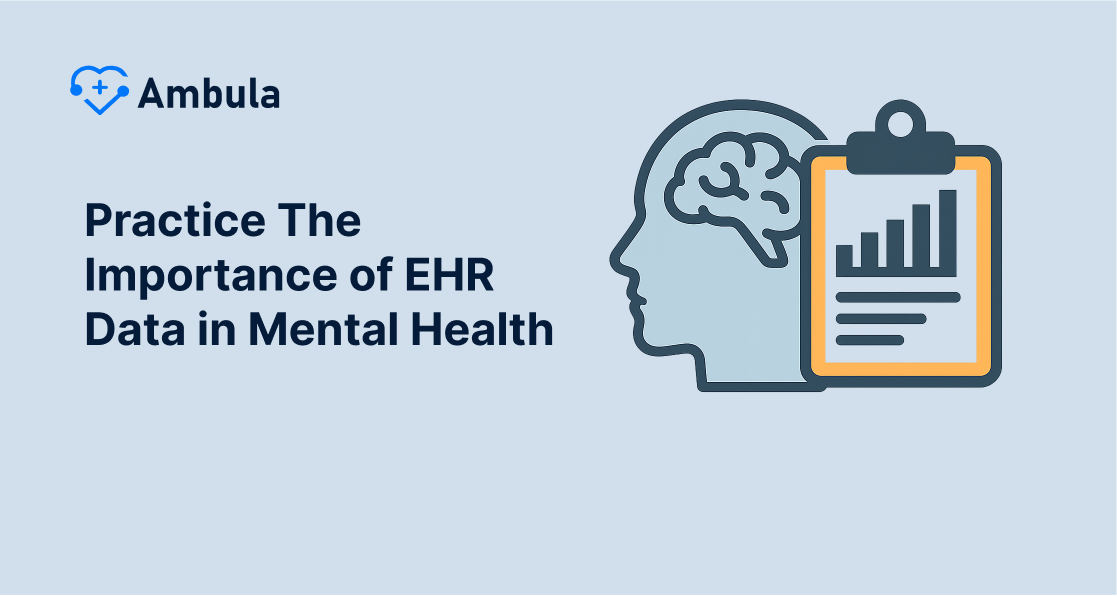
Electronic health records (EHRs) have become an essential tool for healthcare providers, offering a centralized repository for patient data, facilitating communication between clinicians, and enhancing patient care. However, implementing an EHR system can be a complex and challenging undertaking. To ensure a successful EHR implementation, it is crucial to consider a variety of factors, from leadership commitment to thorough training and ongoing support.
What is ehr implementation?
EHR implementation involves integrating an Electronic Health Record system into a healthcare setting. This process includes assessing organizational needs, configuring the system to meet those needs, migrating existing patient data, and training staff to use the new system. It also requires thorough testing before the official launch and continuous support to optimize the system. Successful EHR implementation enhances clinical workflows, improves patient care, and ensures compliance with regulatory standards.
Strong Leadership Commitment
Successful EHR implementation begins with strong leadership support. Senior management must be fully committed to the project, understanding the potential benefits and challenges that come with EHR adoption. They should actively champion the EHR initiative, providing clear direction and allocating the necessary resources. Without strong leadership commitment, EHR implementation is likely to fail.
Clearly Defined Goals and Objectives
Implementing an EHR system begins with establishing clear and measurable goals and objectives. This provides a roadmap for the implementation process and ensures that everyone involved is working towards the same outcome. Clearly defined goals provide direction and focus, allowing the implementation team to measure progress and identify areas for improvement. Additionally, well-defined goals motivate and engage staff, fostering enthusiasm and support for the project. Finally, clear goals can help secure funding by demonstrating the organization’s commitment and the potential benefits of EHR implementation.
Establishing clear goals involves gathering input from stakeholders, aligning the goals with the organization’s overall strategic objectives, ensuring that the goals are SMART (Specific, Measurable, Achievable, Relevant, and Time-bound), documenting the goals clearly, communicating the goals to all stakeholders, and reviewing and revising the goals as needed.
Effective goals are ambitious but achievable, relevant to the organization’s needs, and time-bound to keep the implementation team focused and ensure timely progress. By following these guidelines, healthcare organizations can set themselves up for success with their EHR implementation project.
Selection of the Right EHR System
Choosing the right EHR system is a critical decision that can significantly impact the success of an EHR implementation project. The right EHR should align with the organization’s specific needs, workflows, and technology infrastructure. It should also be user-friendly, adaptable to future needs, and supported by a reliable vendor.
Several factors should be considered when selecting an EHR system:
-
Functional Features: The EHR system should have the necessary features to support the organization’s clinical workflows, including electronic prescribing, order management, documentation, and reporting.
-
Ease of Use: The EHR system should be easy for healthcare providers and staff. It should have a user-friendly interface, clear navigation, and adequate training resources.
-
Compatibility with Existing Systems: The EHR system should be compatible with the organization’s existing IT infrastructure, including electronic medical record (EMR) systems, practice management software (PMS), and laboratory information systems (LIS).
-
Vendor Support: The EHR vendor should provide comprehensive technical support, training, and ongoing maintenance. They should also have a strong reputation for customer satisfaction.
-
Cost: The EHR system should fit within the organization’s budget. Costs should include licensing fees, implementation expenses, and ongoing maintenance costs.
Choosing the right EHR system requires careful evaluation and collaboration among healthcare providers, IT staff, and management. Healthcare organizations should conduct thorough research, request demos from multiple vendors, and gather user feedback to make an informed decision.
Formation of an Implementation Team
A dedicated and well-structured implementation team is crucial for the successful rollout of an EHR system. This team should be composed of representatives from various departments within the healthcare organization, including clinical staff, nurses, IT professionals, and administrative personnel. Each member of the team should have specific responsibilities and expertise to contribute to the project.
The implementation team’s responsibilities include:
-
Developing and managing the EHR implementation plan
-
Overseeing the training and education of healthcare providers and staff
-
Addressing technical issues and resolving user concerns
-
Tracking progress and evaluating the success of the implementation
-
Communicating with stakeholders and promoting adoption of the EHR system
To ensure effective collaboration and communication, the implementation team should meet regularly to share updates, address challenges, and make necessary adjustments to the implementation plan. The team should also foster a collaborative environment that encourages open communication, problem-solving, and a shared commitment to the project’s success.
In addition to its core responsibilities, the implementation team may also consider forming subcommittees to focus on specific aspects of the implementation, such as data migration, workflow optimization, and user training. This can help to divide the workload, ensure expertise in each area, and expedite the implementation process.
By forming a strong and diverse implementation team, healthcare organizations can effectively manage the complexities of EHR implementation, maximize the benefits of the new system, and achieve their overall goals for patient care and operational efficiency.
Thorough Planning and Project Management
A well-defined and well-managed EHR implementation plan is essential for ensuring the successful rollout of the new system. This plan should outline the project timeline, identify key milestones, and assign tasks to team members. Regular project status meetings should be held to track progress, address challenges, and make necessary adjustments to the plan.
The EHR implementation plan should also include a comprehensive risk assessment that identifies potential challenges and mitigation strategies. This will help the implementation team to proactively address issues and minimize disruptions to patient care.
Comprehensive Data Migration
Transferring patient data from existing systems to the new EHR system is a critical component of EHR implementation. This process, known as data migration, involves ensuring the accuracy, completeness, and consistency of patient data.
For psychiatric practices, migrating sensitive patient data like treatment plans, therapy sessions, and medications requires special attention to maintain confidentiality. Utilizing a psychiatry EHR software that ensures secure and compliant data migration is essential for safeguarding patient privacy.
The data migration process can be complex and resource-intensive, requiring collaboration between healthcare providers, IT staff, and data analysts. Healthcare organizations should carefully evaluate their data migration needs, assess the quality and quantity of existing data, and select a data migration methodology that aligns with their specific requirements.
Common data migration methodologies include:
-
Direct Import: This involves extracting data from existing systems and directly importing it into the new EHR.
-
Data Mapping: This involves creating a mapping between data elements in the existing systems and the new EHR to ensure accurate data transfer.
-
Data Cleansing: This involves identifying and correcting errors, inconsistencies, and missing values in the data before migration.
-
Data Transformation: This involves transforming data into a format compatible with the new EHR, such as converting from one data format to another.
To minimize disruptions and ensure the integrity of patient data, healthcare organizations should consider implementing a phased data migration approach. This involves migrating data gradually, starting with a small subset of data and expanding to the entire patient population over time. This allows for testing and refining the data migration process before migrating the entire dataset.
Effective data migration requires careful planning, thorough testing, and ongoing monitoring to identify and resolve any issues that may arise. By implementing a comprehensive data migration strategy, healthcare organizations can ensure patient data is transferred accurately and securely, minimizing disruptions to patient care and maximizing the benefits of the new EHR system.
Workflow Analysis and Optimization
EHR implementation offers a valuable opportunity to critically evaluate and enhance existing workflows. Healthcare organizations should identify areas where the new EHR system can streamline processes, boost efficiency, and minimize the likelihood of errors. By optimizing workflows, organizations can ensure that the new EHR system seamlessly integrates into their existing practices and is utilized effectively.
Specific steps that healthcare organizations can take to analyze and optimize their workflows include:
-
Identify Key Workflows: Healthcare organizations must prioritize the critical workflows that underpin their operations. These may include patient registration, appointment scheduling, order management, and documentation.
-
Map Existing Workflows: A comprehensive map of the existing workflows is essential. This documentation should detail the steps involved, the individuals involved, and the tools and technologies utilized.
-
Analyze and Evaluate Workflows: The organization should thoroughly analyze the mapped workflows to identify areas for improvement. These may include bottlenecks, redundancies, or inefficiencies that hinder progress.
-
Design and Implement Optimized Workflows: Leveraging the capabilities of the new EHR system, the organization should design and implement optimized workflows. These should streamline processes, enhance efficiency, and minimize the risk of errors.
-
Monitor and Evaluate Workflow Optimization: Ongoing monitoring and evaluation are crucial to ensure that optimized workflows are meeting the desired objectives. This feedback loop allows for continuous adjustments and improvements.
User Training and Education
Effective user training and education ensure that healthcare providers and staff can effectively use the new EHR system. Comprehensive training should cover all aspects of the system, from basic navigation and data entry to advanced features and customization options.
Here are some specific steps that healthcare organizations can take to provide effective user training and education:
-
Identify training needs: Conduct a needs assessment to identify the specific training needs of different user groups, such as clinicians, nurses, and administrative staff.
-
Develop a training curriculum: Create a comprehensive curriculum covering all aspects of the new EHR system, from basic to advanced functionality.
-
Provide hands-on training: Offer sessions where users can practice using the EHR system in a realistic setting.
-
Leverage technology: Utilize e-learning platforms, online tutorials, and other digital resources to supplement traditional training methods.
-
Provide ongoing support: Offer ongoing support to users, including help desks, user forums, and mentorship programs.
-
Tailor training to specific needs: Tailor training to the specific needs of different user groups and organizational roles.
-
Evaluate training effectiveness: Regularly evaluate the effectiveness of training programs to ensure that they are meeting the needs of users.
-
Adapt training to changing needs: Adapt training to reflect changes in the EHR system and the organization’s workflow.
-
Recognize and reward training participation: Recognize and reward staff for participating in training and for their efforts to learn the new EHR system.
By providing comprehensive, effective user training and education, healthcare organizations can ensure that their staff can confidently and effectively use the new EHR system, maximizing its benefits for patient care, operational efficiency, and patient safety.
Ongoing Support and Change Management
Successful EHR implementation requires ongoing support and change management. A dedicated support team should be available to address user queries, resolve technical issues, and provide ongoing training. Change management strategies should address cultural shifts and foster user acceptance. Ongoing support and change management will ensure that the new EHR system is adopted and used effectively by all healthcare providers.
Continuous Monitoring and Evaluation
After EHR implementation, it is crucial to monitor and evaluate the system’s performance continuously. This involves tracking key performance indicators (KPIs), such as user satisfaction, system usage, and clinical outcomes. Regular audits should be conducted to identify areas for improvement and ensure compliance with regulatory requirements. Continuous monitoring and evaluation will help to ensure that the EHR system is meeting the organization’s needs and is being used effectively.
Conclusion
In conclusion, successful EHR implementation requires a multifaceted approach that encompasses strong leadership, clear goals, careful planning, comprehensive training, and ongoing support. By carefully considering these factors, healthcare organizations can maximize the benefits of EHR technology and enhance patient care.







